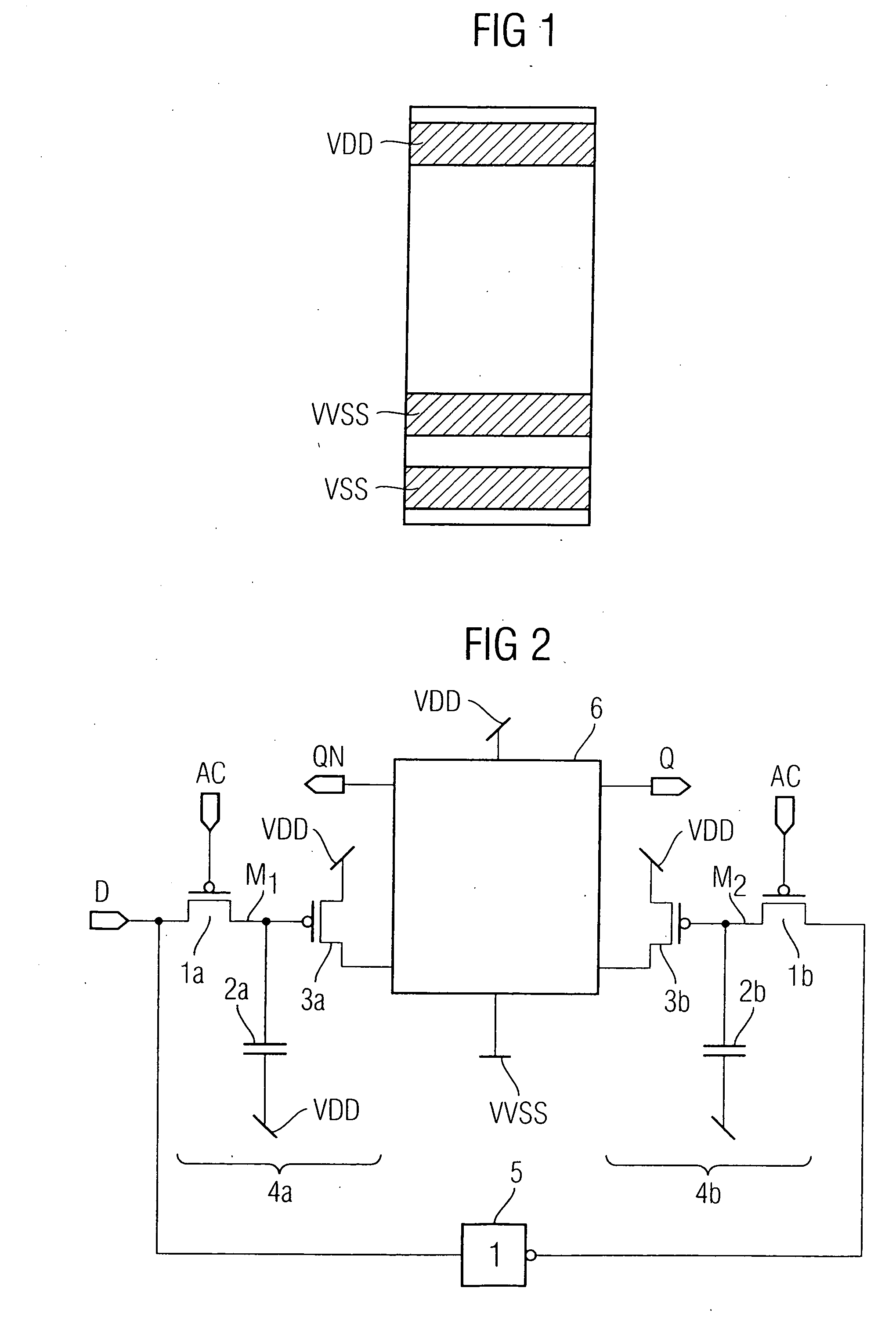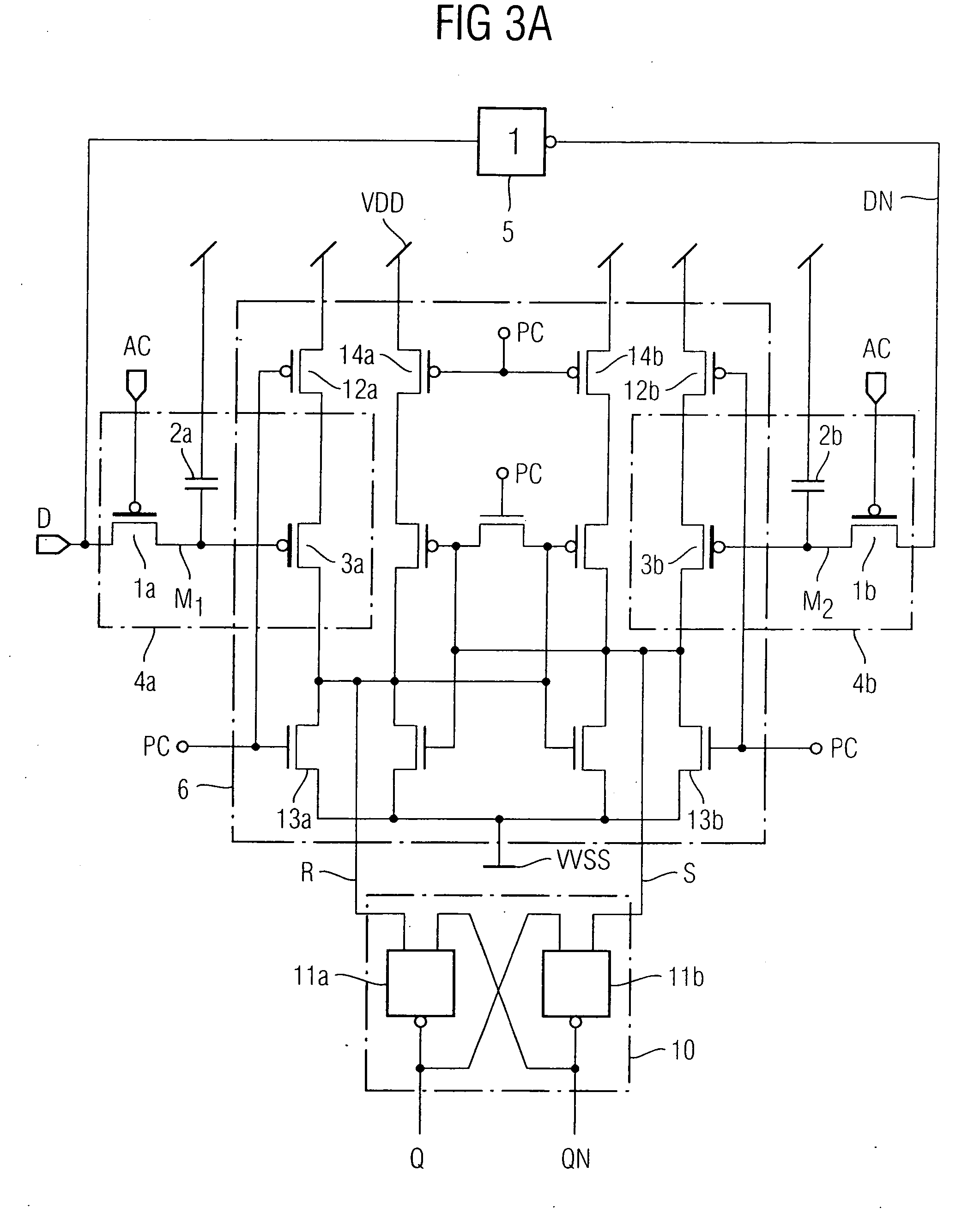Flip-flop with additional state storage in the event of turn-off
a flip-flop and state storage technology, applied in the field of flip-flops, can solve the problems of loss of storage content after the turn, significant increase in power loss consumption, and latency for swapping and loading storage contents, and achieve the effect of increasing the robustness of the flip-flop, increasing the retention time, and reliably reading out over a longer period of tim
- Summary
- Abstract
- Description
- Claims
- Application Information
AI Technical Summary
Benefits of technology
Problems solved by technology
Method used
Image
Examples
Embodiment Construction
[0054] With regard to FIG. 1 concerning the prior art, reference is made to the explanations in the introduction to the description.
[0055]FIG. 2 illustrates a basic circuit diagram of an exemplary embodiment of an edge-triggered state retention flip-flop according to the invention, which can be used in a circuit block that can be turned off by means of an N-MOS power switch. As explained above, state retention flip-flops known from the prior art for state storage, in the turned-off state of the flip-flop, use an additional static latch stage which is continuously switched on. The differential state retention flip-flop according to the invention as illustrated in FIG. 2 is based, by contrast, on two dynamic memory cells 4a / 4b, each comprising a P-MOS coupling transistor 1a / 1b a storage capacitance 2a / 2b and a P-MOS storage transistor 3a / 3b. For the coupling transistors 1a / 1b and the storage transistors 3a / 3b, use is preferably made of thick oxide transistors having at the same time ...
PUM
 Login to View More
Login to View More Abstract
Description
Claims
Application Information
 Login to View More
Login to View More - R&D
- Intellectual Property
- Life Sciences
- Materials
- Tech Scout
- Unparalleled Data Quality
- Higher Quality Content
- 60% Fewer Hallucinations
Browse by: Latest US Patents, China's latest patents, Technical Efficacy Thesaurus, Application Domain, Technology Topic, Popular Technical Reports.
© 2025 PatSnap. All rights reserved.Legal|Privacy policy|Modern Slavery Act Transparency Statement|Sitemap|About US| Contact US: help@patsnap.com



